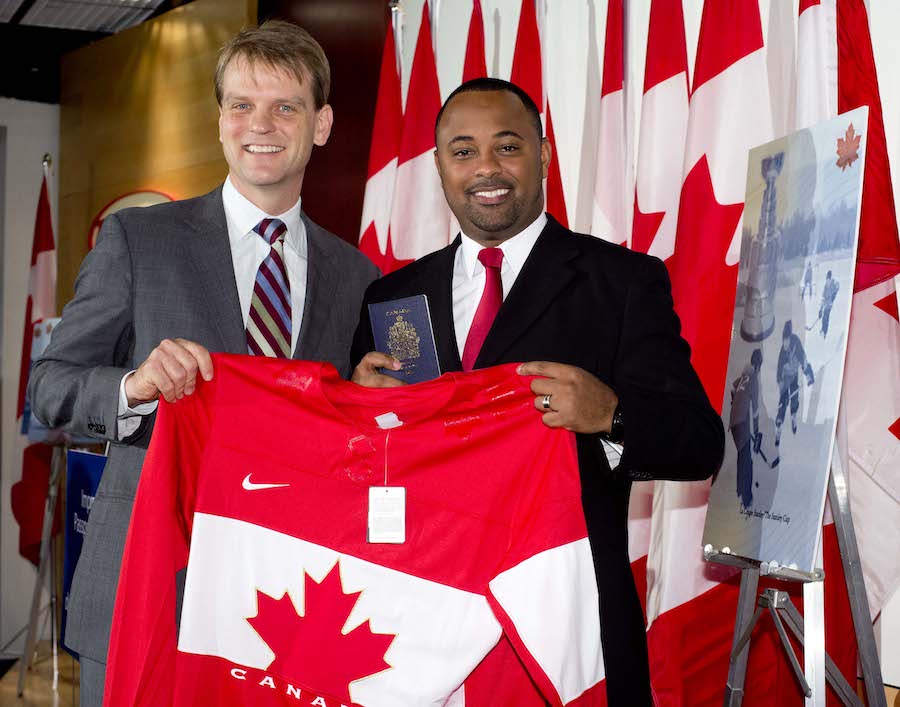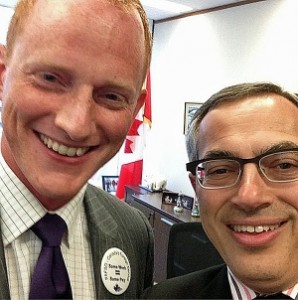
A new report by SFU Professor of Economics (Emeritus) and Fraser Institute senior fellow Herbert Grubel calls for a total overhaul of Canada’s immigration selection process (Simon Fraser University)
A new report by Canadian economist and former Member of Parliament Herbert Grubel calls for Canada’s point-based immigration selection process to be completely replaced with one based on employment.
Grubel, who is a Fraser Institute senior fellow and a professor emeritus of economics with Simon Fraser University has been a longtime proponent of placing more limits on immigration, a position which he views as an extension of his fiscal conservatism.
The report contends that immigration costs Canadians $20 billion annually, as a result of immigrants paying less in taxes while using up just as much in government services as the native-born population.
While welcoming some of the recent changes made to the immigration selection process by former Immigration Minister Jason Kenney, Grubel argues that they do not go far enough, and proposes two major changes to Canadian immigration to make it more economically beneficial to native-born Canadians:
- Elimination of parent and grandparent (PGP) sponsorship for new immigrants. The report notes that following the initial 10-year period when sponsors are financially responsibility for the costs of the social benefits received by their sponsored PGP, the percentage within this cohort that receives social assistance immediately increased from 3 percent to 20 percent.
While welcoming the new 20-year sponsorship period that is to come into effect for the PGP sponsorship program, Grubel says that the enforcement of the sponsor’s responsibilities will be difficult, and it would be simpler to simply eliminate PGP sponsorship as a permanent residency program.
Grubel proposes a transition period whereby all immigrants who became permanent residents before his proposed rule change maintain their right to sponsor their PGPs for permanent residency, while immigrants who arrive after lose this privilege. In this way, Grubel argues the elimination of the program can be done fairly, by allowing those who immigrated to Canada under the assumption that they would be able to sponsor their PGPs to retain this ability.
- Replace point-based assessment method of selection with employment-based selection. Grubel suggests only skilled workers with pre-arranged employment should be admitted under the skilled worker program. He argues that employer decisions on who to hire provide better information on who has the skills to succeed in Canada than a bureaucratic process created by civil servants.
He proposes however to keep the federal government involved in setting minimum standards and wages, to prevent employers from using immigration to secure low wage labourers that cost taxpayers more in the provision of social services than they pay in taxes.
An employment-driven skilled worker program, the report suggests, would adjust the number of immigrants admitted according to economic conditions, where immigration would decline when jobs are scarce, and increase when jobs are plentiful. The number admitted per year would therefore match the needs of the Canadian economy better than a number selected through the political process.
Critique of report by the Broadbent Institute
The report’s proposal to dramatically overhaul the Canadian immigration selection process has, predictably, found critics. A recent article from Broadbent Institute fellow Patti Tamara Lenard challenges several of its claims.
Lenard argues that the report’s conclusion that immigrants impose a fiscal burden on other Canadians, which it draws from statistics showing recent immigrants have a lower average income and pay less in taxes than the average native-born Canadian, neglects the fact that immigrants are younger than the average Canadian when they arrive in Canada, and therefore is faulty.
The report’s analysis of immigrant income does not include only immigrants who just arrived in Canada however. The immigrant cohort used by Grubel’s comparison is individuals who arrived in Canada between 1986 and 2004, and the length of time they were in Canada ranged from 1 to 18 years.
While Lenard’s suggestion that the analysis compares younger immigrants to older native-born Canadians is not supported by the composition of the dataset used by the report, it is true that Grubel does not make an effort to control for age in his analysis, and therefore it could be an unaccounted factor in the income gap.
Lenard also disputes the report’s assumption that immigrants are as likely to use social programs as the rest of the Canadian population, citing a Swedish study that finds that Canadian immigrants use fewer social services than the general population. The report’s estimation on the cost of the social services used by Canadian immigrants is therefore too high she argues.
Lenard’s article in places makes some hasty and inaccurate criticisms of Grubel’s report. She claims for instance that the report states that “in 2011 over 50,000 [Parent and Grandparent] immigrants entered Canada”, but that the actual number was 14,000.
In actuality, the report cites Citizenship and Immigration Canada’s (CIC) own data projecting that over 50,000 PGPs will become permanent residents over 2012 AND 2013, a two year period, not in a single year, 2011.
Lenard also claims that the report “implies .. we should expect [PGP’s] health care costs to mimic those of Canadians aged over 65”, and that this is misleading, due to the fact that PGPs’ health care costs are covered by their sponsors for the first 10 years after their arrival. The content of the report does not support Lenard’s claim, as it clearly conveys the same point Lenard claims it neglected, and instead focuses on indications of high social assistance costs for PGPs once they turn 75 and are no longer the financial responsibility of their sponsors.
Gaps in data
While the Broadbent Institute’s review of Grubel’s report falls short in providing an informed critique of the report’s proposals and arguments, it does touch on the gaps in the data on the economic impact of Canadian immigration, and the heavy reliance on conjecture – which is more subject to the influence of ideology – in discussions on the optimal immigration selection process for Canada.
As a result of the many unknowns surrounding immigration and its impact, it will likely remain a contentious issue in Canada for years to come, until more data on the economic outcomes of Canadian immigrants is generated, and Canadians have a clearer picture of what programs work and which ones don’t.










